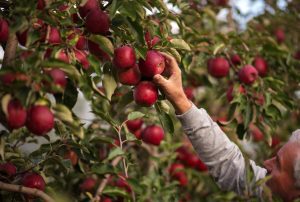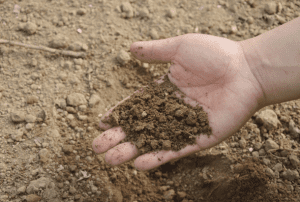Strategically managing water and nitrogen
Research & ExtensionResearchers are transforming existing knowledge about how apple trees take up and use nitrogen and water into a useful decision support tool that growers will be able to use to help manage nitrogen and irrigation in apple orchards for a desired crop outcome.
To help apple growers manage their orchard’s irrigation and nitrogen inputs, we are testing a model that predicts tree water use and nitrogen content in the leaves and fruits of apple trees across growing seasons. Our next step is to develop a decision support tool that uses this information to help growers strategically manage their fertiliser and irrigation inputs for a desired crop outcome.
SPASMO: Predicting water and nitrogen use
Over the last three years, we have established irrigation and nitrogen field trials in Tasmania and Victoria to test, validate and improve the New Zealand fruit tree model called SPASMO (Soil-Plant-Atmosphere-System Model). SPASMO is used to predict tree water use and nitrogen content of the leaves and fruit.
These trials (see Precision fertigation to improve apple orchard productivity) and the ongoing research at Lucaston in Tasmania have shed light on how apple trees partition, mobilise and store water and nutrients between the roots, shoots and fruit. Using this new understanding together with locally characterised soil properties, SPASMO is now generating reliable predictions of tree water use and nitrogen contents of the tree’s leaves and fruit.

Fig 1: The seasonal pattern of tree transpiration losses from a Lucaston orchard as measured using sap-flow sensors in the trunks of six apple trees across two years (red and green lines), and as predicted by SPASMO (blue line). It shows that the SPASMO prediction closely matched what was actually measured.

Fig 2: The blue and red lines show the nitrogen content in the leaves and fruit of a ‘model’ apple tree as predicted by SPASMO if 30 kg/ha of nitrogen is applied. The circles show the average nitrogen content in the leaves and fruits at the trial site in Lucaston. After three seasons of field trials and data collection, SPASMO now reliably predicts the tree water requirements and the leaf and fruit nitrogen concentrations.
SINATA: a tool to help manage nitrogen and water
Now that SPASMO is accurately predicting tree water use and nitrogen content in leaves and fruit, our aim is to transfer the model from the research lab into the hands of growers, agricultural consultants and front line advisors. The user-friendly version of the model will be called SINATA (Strategic Irrigation and Nitrogen Assessment Tool for Apples). Underpinning the role out of SINATA will be thorough hydraulic and physiochemical description of local soil properties for each key apple growing region in the country so that the tool will have nation-wide applicability.
Over the next two years we will work with growers and their advisors to develop SINATA, which will enable strategic questions around irrigation and nitrogen management to be explored. For example, it is envisaged that a grower in any region of Australia will be able to look up their soil type, local climate, and tree information to determine their average irrigation and nitrogen requirements, assess the efficiency of current management practices in terms of the proportion of applied irrigation and nitrogen the trees are using, or explore the potential savings associated with, for example, switching from calendar based to targeted irrigation scheduling based on soil moisture status.
The PIPS project has provided important reference information regarding the link between the percentage of nitrogen in fruit and the fruit’s quality at harvest and after storage. The ultimate aim of SINATA will be to provide growers nationally with a simple to use tool to strategically manage their irrigation and nitrogen inputs for desired crop outcomes.
If you are interested in learning more about SINATA or would like to contribute to its development by providing ideas for usability please contact Marcus Hardie on [email protected].
Acknowledgements
This article was co-authored by Marcus Hardie, Nigel Swarts and Dugald Close, Tasmanian Institute of Agriculture, and Steve Green, New Zealand’s Plant and Food Research.
The article reports on work under the project, ‘Precision fertigation for improved apple orchard productivity’ (AP12006), which is funded by Horticulture Innovation Australia Ltd using the apple and pear industry levy funds from growers and matching funds from the Australian Government. It is part of the current PIPS project.




